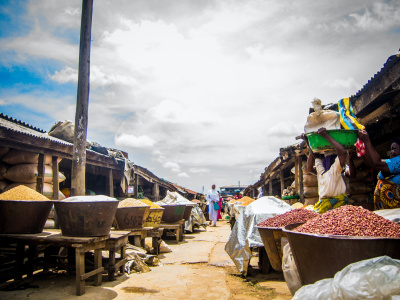
West African cement - Stuck between politics and economics?
This blog takes the example of cement as a sector where policy ambitions and private sector activities seem to align. Yet, it also identifies challenges.
Despite the hype around Aliko Dangote, the Nigerian billionaire who ostensibly shows that business CAN be done in Africa, little development policy thought or debate seem to focus on the sector that got him started – cement. This is despite its importance in socio-economic development, whether thinking of post-war reconstruction, expanding transport infrastructures or building schools, hospitals and homes. It is also surprising given the large share of domestic and foreign public finance that is spent on the product and the potential employment offered by cement production and processing as well as construction.
But where you might think people most need access to cheap cement is also where it is the most expensive – average cement prices across Africa are almost 3 times the average world price. Even in Nigeria, prices are at least double the price in most nations around the world in spite of Dangote’s rapid expansion of cement production and policies to prioritise the sector for industrialisation across the entire region – the West African Common Industrial Policy cites construction materials including cement alongside agriculture as key priority sectors to promote regional industrialisation.
The case of cement in West Africa, therefore, appears to be a good example of some of the challenges of promoting economic transformation through regional value chains, and a growing ambition across a number of African regional communities.
Concrete issues
Part of the explanation for high cement prices in West Africa lies in the nature of the sector. Cement needs clinker, and clinker needs limestone, none of which is produced cheaply, while the raw materials are not uniformly spread across countries nor close to consumers. With inefficient and expensive transport markets in the region, transporting raw limestone, and especially clinker across large distances adds to the costs – such are the costs of transporting finished cement that cement factories must be located within 300km of consumer markets to remain profitable. The transformation of limestone to clinker is particularly energy-intensive, while electricity costs are also high in the region, even with preferential rates for the industry. Combined with the high capital costs of mining limestone, grinding and transforming it into clinker before further grinding and blending into cement, which can mean equivalent to three years’ turnover to recuperate costs, the entry barriers to the cement industry are high, leading to concentration and market domination by a very few firms.
Yet, beyond the specificities of cement production and trade, the nature of national and regional markets and value chains are very much shaped by political as well as economic factors (e.g. livestock and rice in West Africa).
According to ECOWAS trade policies – the ECOWAS Trade Liberalization Scheme Rules for Traders (ETLS) – cement produced in the region should not attract import customs duties and taxes when traded across borders within ECOWAS. Nigeria, however, has banned all cement imports, protecting the interests of domestic cement producers vis a vis cement imports from Europe and around the world. At the same time, Dangote is entering other markets in the region (often with limited competition) and seeking protection from imports there too, while pre-existing firms, for example in Senegal, complain of preferential treatment for the regional magnate. Together, these firms accuse cement importers of undercutting locally produced cement by underreporting the value of imports from outside the region. All this highlights the important role played by state-business relations.
What complicates matters further is that the application of trade policy at ports and borders, the electricity markets, and the transport markets are also subject to an array of competing interests and power relations, raising the political cost and complexity of addressing them.
No quick fixes
Although this array of complex interactions is perhaps characteristic of many regional value chains, it nonetheless highlights that trade policy and trade dynamics are inherently tied up with company strategies and the political weight that these companies exert on national governments within a region.
But this does not mean that nothing can be done.
The World Bank (2016) finds that competition law enforcement, removal of non-tariff barriers, and pro-competition rules to enable entry in limestone and clinker production could save African consumers around $2.5 billion each year. While not sufficient to argue that these should simply be implemented, wider knowledge of the potential saving might empower consumers to demand action.
One way to progress might be through multi stakeholder dialogues, including with sector operators. This might help overcome some of the coordination failures and align interests around reduced transaction costs and trade between a certain number of countries according to their role in the regional value chain (e.g. Togo as key exporter of clinker, Cote d’Ivoire and Ghana as key importer of clinker, and cement producer, and Mali as a cement importer). Developments along major transport corridors might also act as important conduits for further public or private investments that can alter the incentives at play in the cement sector and those that cut across it. Who knows, even donor programmes to facilitate trade might play a role.
Whatever happens, Dangote Cement posted a 12.6% increase in sales volume across Africa a few weeks ago in spite of a decline in volumes in Nigeria. That perhaps underlines the most important point – even major national champions rely on regional markets in the long run. Taking account of the political economy around regional markets will be crucial for policy-makers looking to support economic transformation and wider development in the region.
This blog is based on our paper Regional markets, politics and value chains: The case of West African cement.
The views expressed here are those of the author and not necessarily those of ECDPM.





